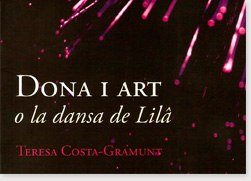
Teresa Costa-Gramunt
Writer
On August 9 (2007) an exhibition of paintings by Waltraud Maczassek, available to visit until September 30, opened in the Edifici Miramar in Sitges. It provides an extensive pictorial journey through the work of the German – born artist, who has long – standing ties to the Penedès region, as well as to Sitges. In fifty or so pieces of work, we are taken on a path leading from figuration to abstraction – particularly of the landscape.
"Figuration" is not always the rigid depiction of the painted object. And "Abstraction" – or conceptualisation – do not have to be a fantasy either, but may instead be a "figurative" reality, imagined, or distorted. This is because "reality", as an absolute concept, is the elusive everything without the insightful subjectivity. Art that is more "figurative", more "objective", does not represent all possible forms of figuration. In the same way, "abstract" or "conceptual" art is still a case of "taking a form", no matter how surreal it may seem. In this sense, giving reason to or commenting on a work of art is also a "figurative" act, either scarcely or highly subjective. Art is polysemous: A work of art invites various interpretations. A work of art is rich and retains its air of mystery – what would artistic creation be without its halo of mystery! –when it does not allow itself to be trapped by a single interpretation – something which would make it into more of an "object" than a "subject".
Patinir – the current exhibition of this XVI century artist at the Museo del Prado is impressive – was the pioneer of landscape as an independent genre at the start of modernism. Following on from him, various artists began to express, in painting landscapes, their own ideas about nature – a mystery par excellence –, whether this meant seeing it as a reflection of the soul, or as itself, an object to be represented.
We therefore have two schools of thought: nature in itself, i.e. external to the artist – observer, and nature internalised by the artist, which is expressed through an imagined, figurative landscape – a product of the imagination, or of the soul, or of an emotional resonance... But there still may be a third direction for the representation of landscapes in art: a fruitful symbiosis between impression and expression, between the external and the internal, between the more or less representational and the more or less figurative.
The latest paintings by Waltraud Maczassek, landscapes that are poetically gestural in many areas, seem to want to follow this path of synthesis. On one hand, the artist strives to capture the life force or power of the nature that overcomes her, but at the same time this nature is an image or a projection of her own internal life force and power.
A painting would be mere representation if it were not for a pulse running through that projects it far beyond. It is a vibration that elevates the work beyond its rigid materiality, a vibration that electrifies the artwork. As for representation then, we can stick with the simple, superficial aesthetic. But those of us contemplating a work of art can also, thanks to a seductive force, to a calling that rings out from inside the work, allow ourselves to be discovered by a hidden reality, a part of the intangible that is at the heart of certain artworks.
This hidden energy bursts forth to meet us from paintings such as Flow, Imaginary Spaces, Infinite Distances or Reflections by Waltraud Maczassek (all completed in 2007). It is an immaterial energy made visible in this pictorial vibration which we experience not only visually, but as a tactile, aural and olfactory sensation, and which shakes us with force, with its incredible light. These and other exhibited paintings are snapshots of living oscillations. These paintings, without specific forms, are like the world prior to its materialization (nature in its original state), and while capturing the process of creation when energy was still unformed matter, they also reflect a mystery: intelligence, and the emotion of the artist in the act of creation itself.